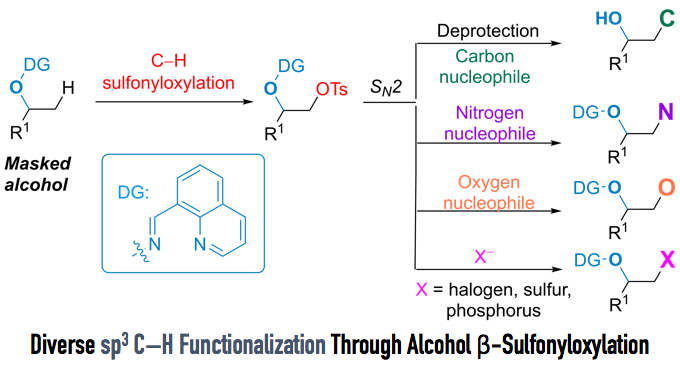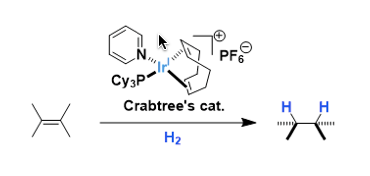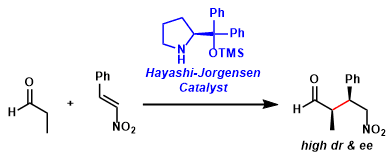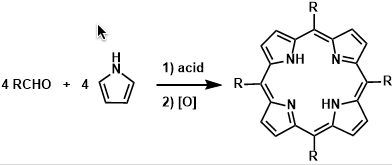Sp3 C–H β-Sulfornyloxylation of Alcohols Carbon–hydrogen bond activation (C–H activation) allows for the transformation of inherent C–H bonds within a molecule to various functional groups without ...
Monthly Archives: November 2015
Blum-Ittah Aziridine Synthesis
General Characteristics Epoxides can be converted into aziridines by nucleophilic attack of azide ion, the Staudinger reaction, and aziridine ring formation with elimination of triphenylphosphine ...
C-C Bond Activation
General Characteristics Carbon-carbon bonds are among the strongest in organic compounds. Activating them for useful chemical transformation is one of the newest and biggest challenges in organic ...
Crabtree’s Catalyst
General Characteristics [Ir(cod)(PCy3)(Py)]PF6 is an easily handleable cationic iridium complex used as a homogeneous hydrogenation catalyst. The complex was developed by Robert Crabtree of Yale ...
Giese Radical Addition
General Characteristics Carbon free-radicals (generated from organic halides, the Barton esters, etc.) are nucleophilic and can be trapped with various electrophiles. In particular, trapping of ...
Hayashi-Jørgensen Catalyst
General Characteristics The diarylprolinol silyl ether organocatalysts facilitate various asymmetric reactions of aldehydes by forming active enamine and/or iminium intermediates. These catalysts are ...
O-Acylisopeptide Method
General Characteristics The peptides in which the serine and/or threonine residues are isomerized from amide to ester (with their side chain hydroxyl group) are called O-acylisopeptides. ...
Rothemund-Lindsey Porphyrin Synthesis
General Characteristics Meso-substituted porphyrins are synthesized by condensation of aldehydes and pyrroles followed by oxidation. The early methods needed forcing conditions but the improvements ...
Julia-Kocienski Olefination
General Characteristics The original Julia olefination procedure was somewhat inconvenient as it required three operations (nucleophilic addition, acetylation, and elimination using toxic Na ...
Organotrifluoroborate Salts
General Characteristics Organotrifluoroborate salts (R-BF3–) are stable towards heat, air, and moisture, and are convenient crystalline reagents. Because of the tetra-coordinated borate ...










